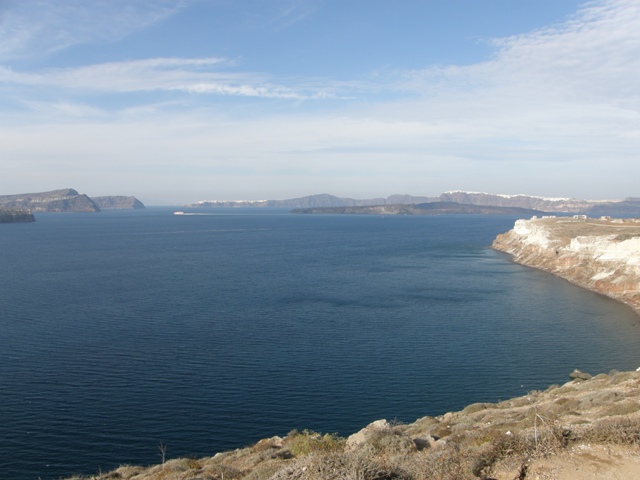
Santorini caldera
According to geologists and volcanologists, there have been twelve circles of volcanic activity over the last 200,000 years and the south side of the caldera was created after an eruption 100,000 years ago while the side was created after the eruption that occurred in 1,600 BC. As the ancient island known as Strongyle was torn asunder the caldera was formed.
The caldera of Santorini lies on 84.5 sq. meters and it is surrounded by Thera, Therasia and Aspronisi. Its bottom consists of four basins which were discovered during bathymetries. The deepest part has been noted at the northeast basin and it is 400 meters deep. This basin must have been shaped after the Minoan eruption while the rest must have pro-existed.
Both the surface and the depth of the caldera grew bigger after the Minoan eruption yet there was no decline to the volcanic activity. When the volcano woke up once more in the 2nd century BC, the caldera was filled with volcanic material and a new island emerged from the sea, it was Iera. As these eruptions filled a part of the caldera with volcanic rocks, the creation of new islands are possible in the future.
Scientists believe that the appearing of islands in the caldera are evidences of volcanic activity and precursors of a new strong eruption, like the Minoan. Iera island has been considered as a precursor of the Minoan eruption.
